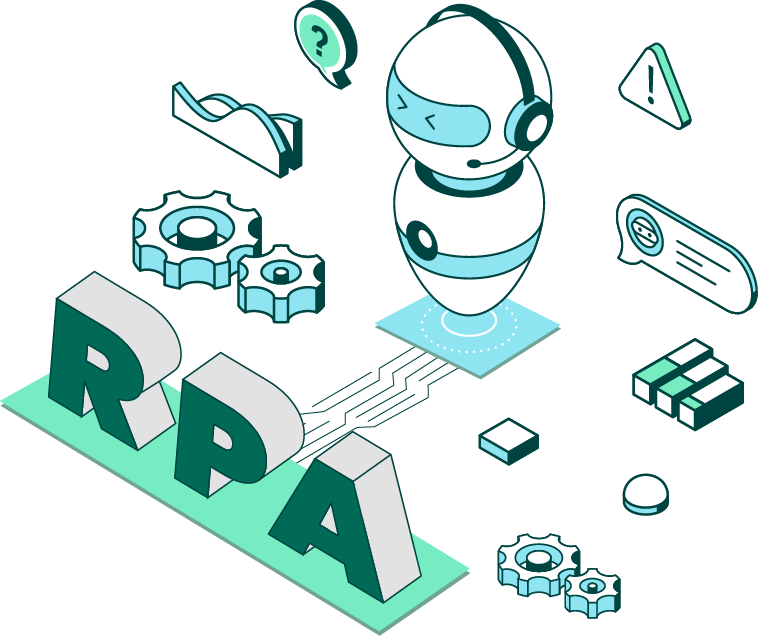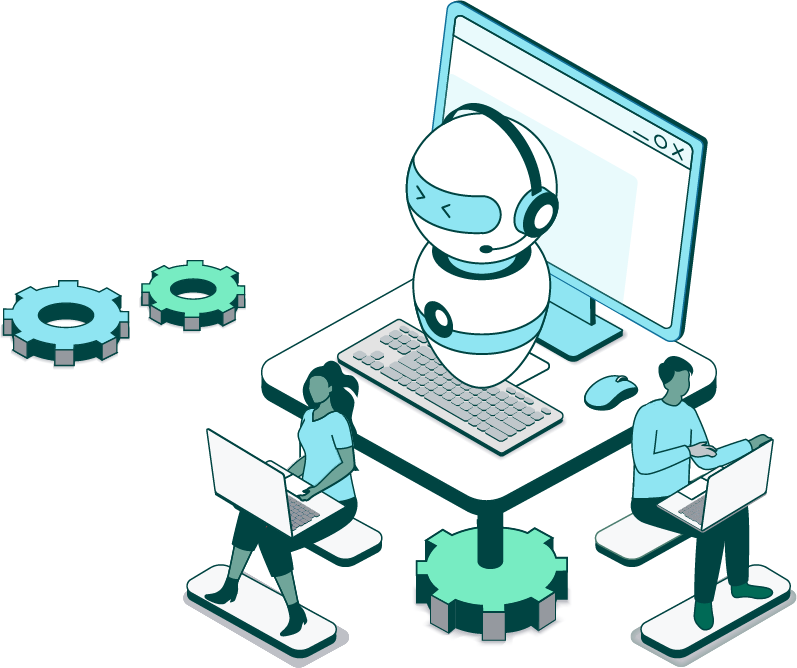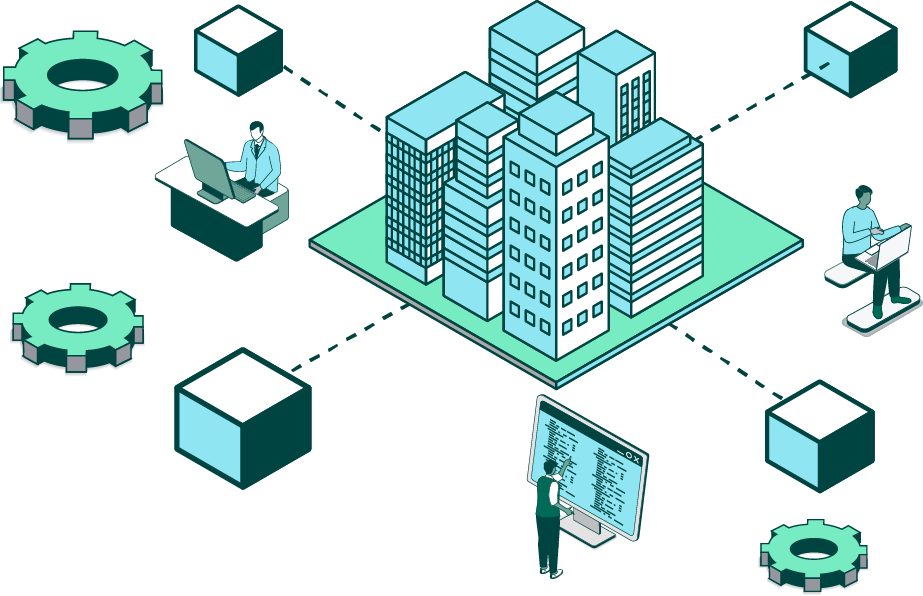The realm of automation and cybersecurity is always changing, and we’re evolving right alongside it. Say hello to Fortra, the new face of HelpSystems. We’re bringing you the same people-first support you’ve come to expect from HelpSystems, only now we’ve been Fortra-fied with the purpose of providing you with exceptional protection and peace of mind along every step of your journey.
Understanding Automation
Automation software is a technology designed to streamline manual, time-consuming processes to complement human work. As automated technologies have advanced, they're able to transform even more complex tasks and workflows than ever before. And as organizations rely on more and more platforms, applications, and systems, automation has become an important way to integrate and orchestrate IT environments.
Why Use Automation?
Automation operations—with the right mix of tools—can help organizations stay agile and competitive. Implementing automation in any form is an easy way to reap major benefits for your business that help streamline and optimize operations, boost productivity, and maximize resources.
Advantages of IT Automation
Why Teams Need IT Automation
Many IT and security teams have a shared list of responsibilities, causing you to wear multiple hats throughout the day. And yet, there still aren’t enough resources to accomplish all the work as new applications—and their associated alerts—come online. Add to this business users’ need to manipulate data in a myriad of ways, and there’s simply no possibility of getting everything done effectively with manual processes.
Enterprise Automation: A Holistic Guide
It's more important than ever to leverage a strategic approach to automation that manages diverse enterprise solutions and tools more holistically. Review our white paper to explore key principles, examine critical cornerstones, and discover how to bring together diverse technologies to solve your unique IT automation challenges.
Three Key Automation Solutions
Complete more work in less time, empower employees to automate manual tasks, and centralize your IT team’s entire schedule.
Robotic Process Automation

Many organizations rely on employees to complete time-consuming processes that don’t add value to the business. These error-prone tasks require tremendous resources and effort but can result in costly mistakes for the organization. Perhaps worse, these tedious efforts take individuals away from making more strategic contributions to the business.
Robotic process automation (RPA) addresses these challenges by giving manual, repetitive tasks to software robots that don’t make mistakes. RPA reduces the burden on human employees and empowers them to spend more time on strategic initiatives. By transforming how organizations work, RPA enables your business to increase productivity, reduce costs, eliminate costly errors, and increase productivity with a scalable, digital workforce.
RPA can automate virtually any business or IT process, including high-volume data transfers, mortgage and loan processing, syncing of patient records, and insurance claims processes. It can also manage web browser automation, data extraction and scraping, Microsoft automation, report generation and distribution, and a wide range of other automation tasks.
Fortra offers a top-rated RPA solution that puts you in the driver’s seat. Empowering you to streamline business or IT processes that span locations, departments, and systems. Automating as much or as little as you want to give your business and your employees a boost.
Robotic Process Automation in Action
As a growing community bank, Carter Bank & Trust was spending too much time on error-prone, manual tasks. Learn how they turned to RPA to automate over 75 tasks—and saw 3,800% ROI in just five months.
Intelligent Document Processing
Harness the power of OCR, AI and machine learning to streamline manual document processes and eliminate costly steps like document classification, manual data entry, and document analysis with intelligent document processing (IDP). IDP enhances RPA capabilities to bring judgement and decision making to transform complex processes like mortgage processing, claims processing, and invoice processing.
IDP goes beyond simple data capture using sophisticated algorithms that learn your documents directly from your interactions. Capture structured, semi-structured, and unstructured data to make sense of every form of data entering your business—from PDFs, forms, emails, documents, and more.
Our IDP solution delivers advanced intelligent capture software to improve the accuracy of your data and simplify document processing, all without the need for complicated, time-consuming setups. With easy-to-use, install, and maintain IDP software, get up and running fast to start processing documents or forms on the very first day—with no template building.
Intelligent Document Processing in Action
Logistics company Portmade NV was wasting valuable time manually importing customer data. By implementing IDP, they saved an estimated 7,400 yearly labor hours and achieved more accurate data processing.
Workload Automation (WLA)

IT teams need powerful automation capabilities to run, manage, and monitor critical batch processes that typically consume a costly mix of resources to run across separate environments. From managing big data jobs and improving SLAs to enforcing enterprise security and analyzing performance metrics, it is essential to centralize job scheduling and workload automation across your entire IT infrastructure.
Fortra's workload automation (WLA) solutions offer enterprise automation for a diverse set of platforms and applications, both on-premises and in the cloud. From simple batch processes and scripts to cross-platform workflows that integrate jobs running on multiple servers and business applications, now you can easily manage and automate IT processes from a centralized console.
Support jobs and workflows on all major platforms and applications. And seamlessly integrate or embed on Windows, Linux, IBM i, and AIX. Streamline and centralize job management to minimize operational costs associated with keeping critical batch processes running efficiently, enabling you to maximize the value of your IT investment.
Learn About Workload Automation
Workload Automation in Action
Household appliance maker SharkNinja was depending on a mix of native and home-grown scheduling tools with limited features. So they made the switch to WLA and centralized their schedule under a single pane of glass.
Infrastructure Automation

Boosting efficiency while minimizing costs is no small task—and increasingly complex IT infrastructure continues to tax IT teams. With a wide variety of hardware, software, operating systems, networking components, and data storage components to manage across on-premises, cloud, and hybrid IT environments, automation is a must. This infrastructure also supports irreplaceable business data and critical applications. As a part of infrastructure management, ensuring HA/DR for this vital information and facilitating data collection and data access is essential.
By putting automation in place around infrastructure and information management, IT teams are better positioned to scale operations, cut costs, gain control and visibility, and add value to the organization.
Fortra offers a comprehensive portfolio of infrastructure automation solutions with robust reputations and best-in-class tooling for every environment, including IBM Power Systems running IBM i. With an optimized infrastructure and ready, reliable access to the data stored there, IT teams can deliver outstanding service and availability to customers and internal users while empowering their organization to make smart—and profitable—business decisions.
Infrastructure Automation in Action
Using network mapping and monitoring, one university is able to monitor any IP-enabled devices to see a full picture of their network. This has become especially important as they shift from a paper textbook learning environment to a digital one.
These infrastructure automation solutions allow the university to have visibility into all connected devices, and thanks to real-time alerts and dynamic network maps, they can catch bandwidth and network outage issues before they cause a disruption to learning environments.
Looking for IBM i Automation?
IBM i is celebrated for its low total cost of ownership. One of the main reasons IBM i shops can keep TCO so low is because the box requires very few staff to administer. That’s a lot of job security for your team member, but what happens when he’s out sick or she leaves the company? Automation is the answer. Not only does automation improve accuracy and efficiency, it also keeps a record of your processes and system activity, which really comes in handy during an audit or when training new staff on the operating system.
Explore IT Automation Solutions from Fortra
Take Your Automation to the Next Level
Looking for more? Let’s talk about how we can help.


